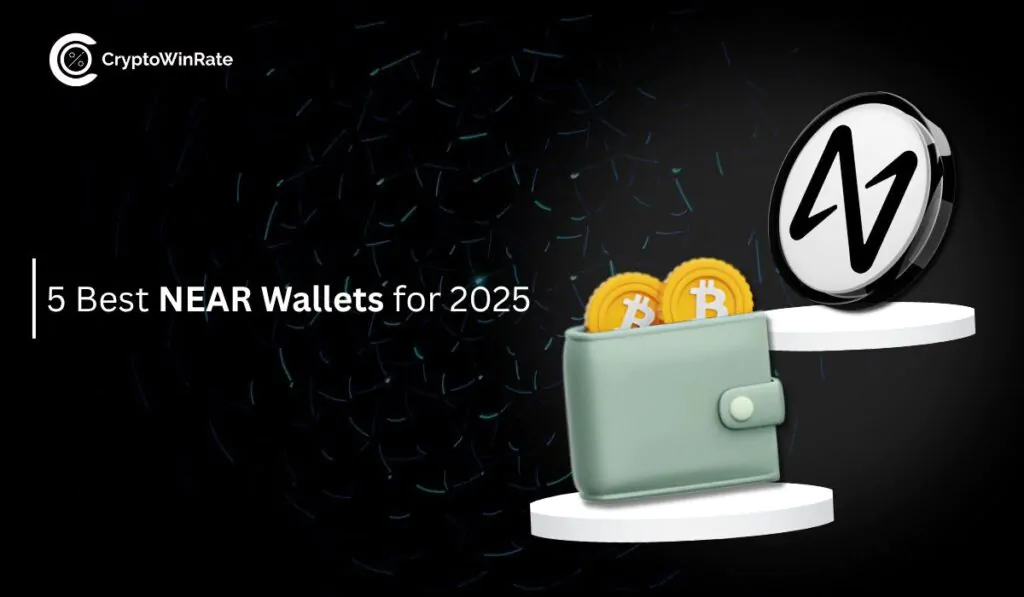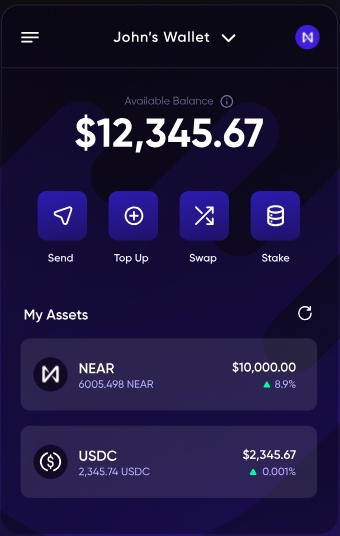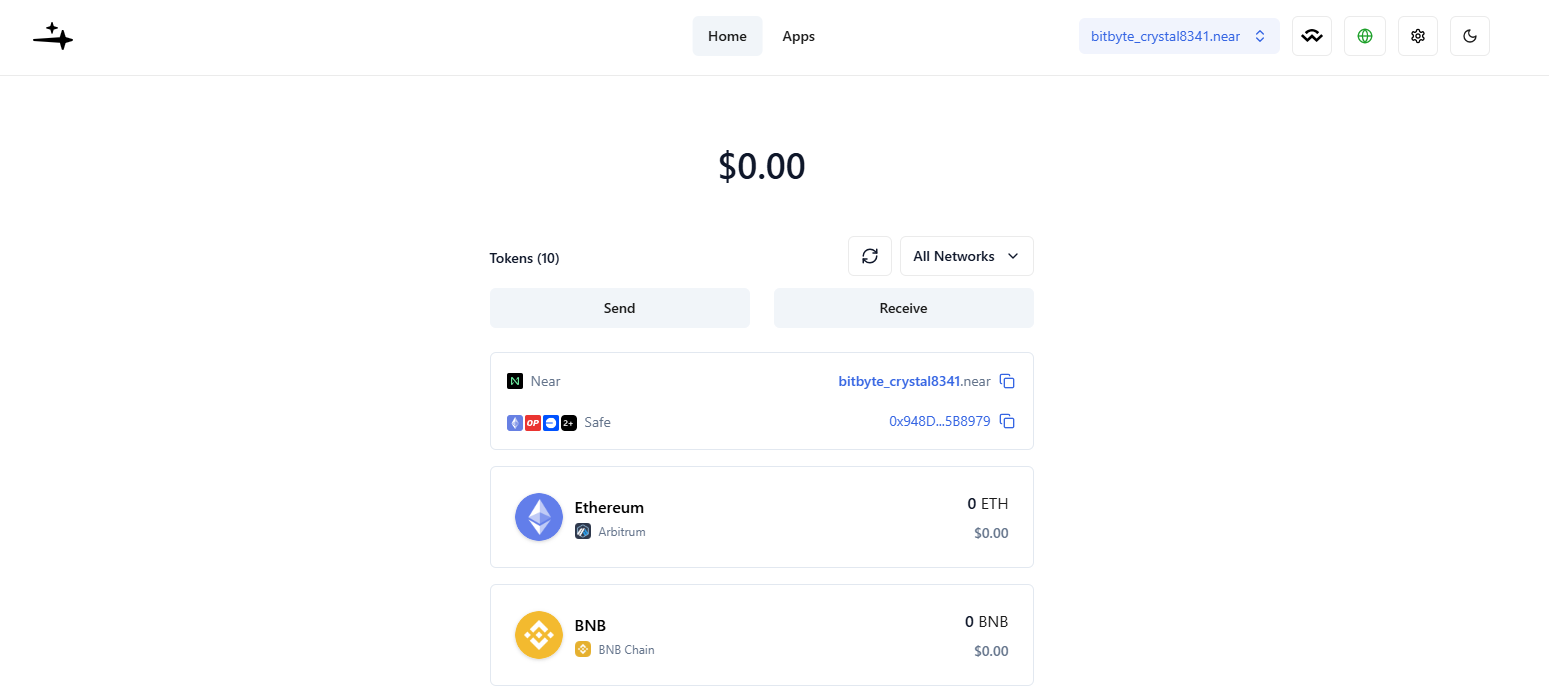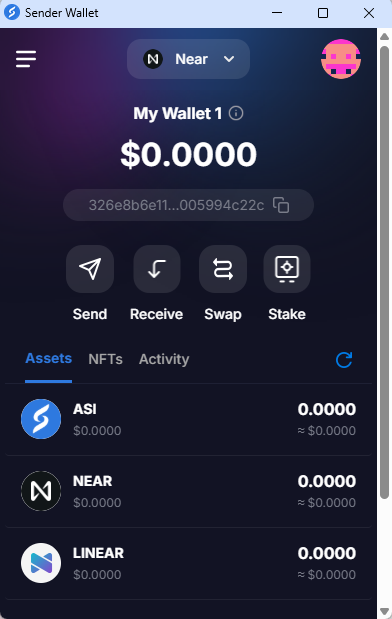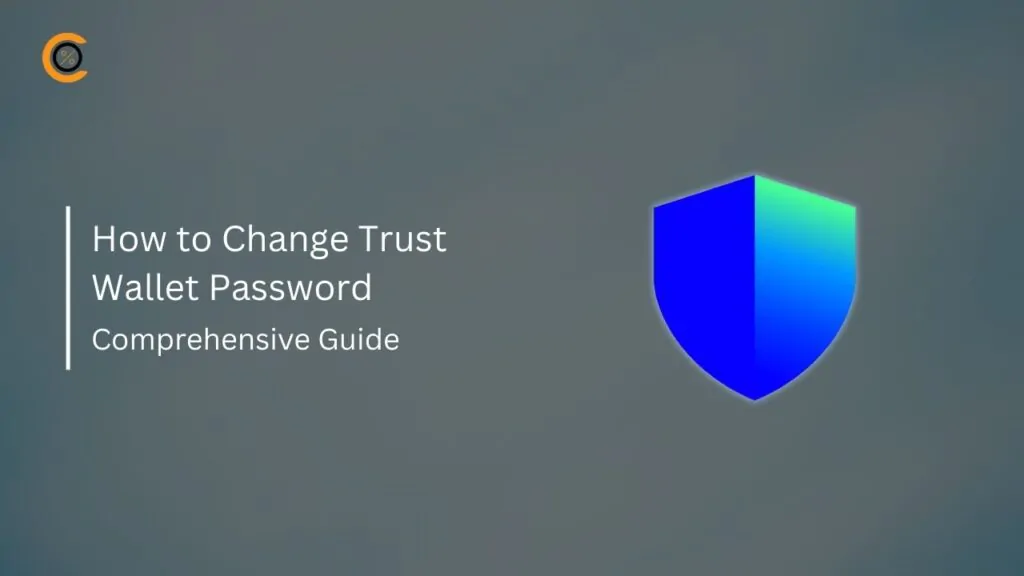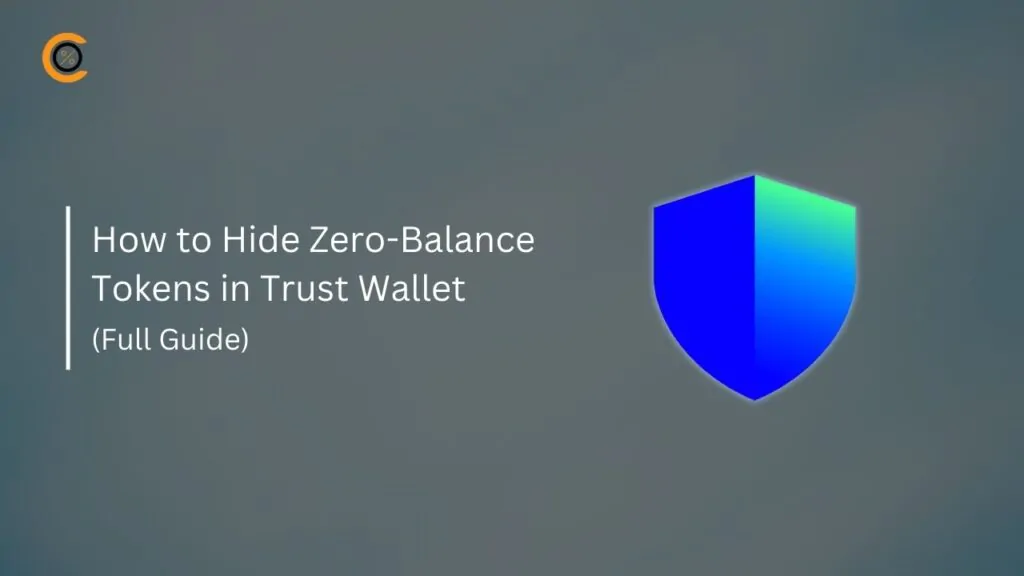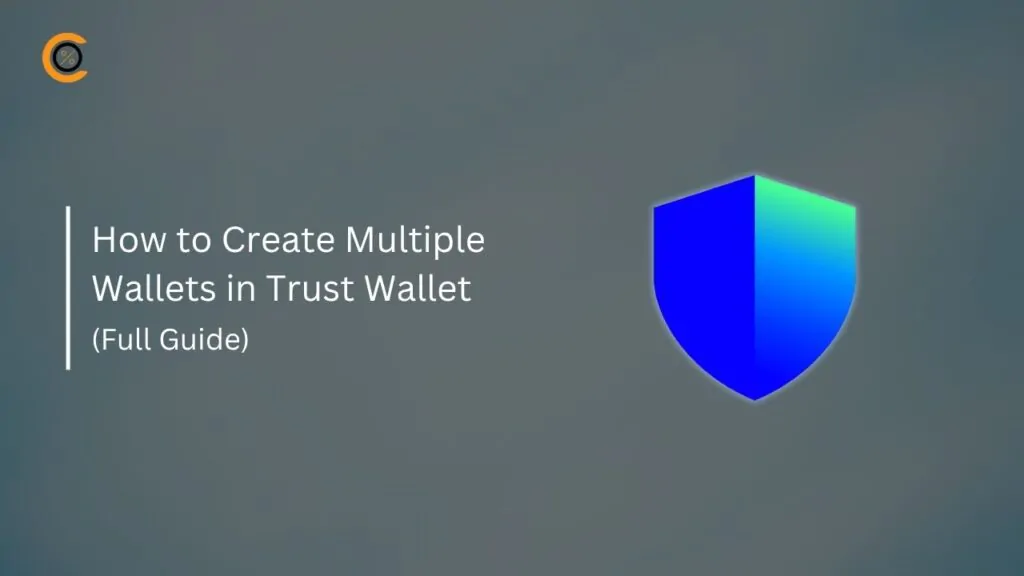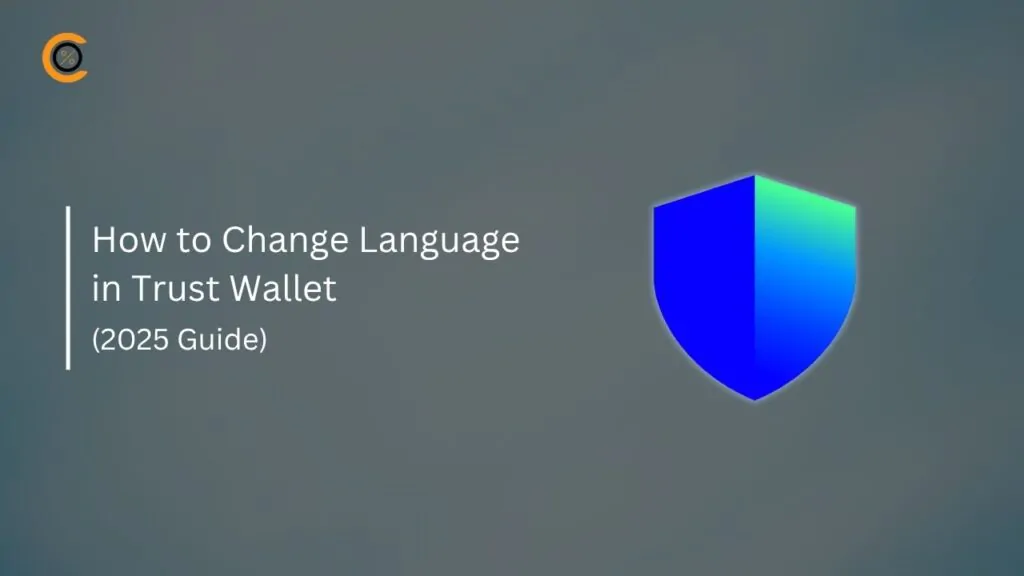In crypto, wallets are an essential part of the puzzle, especially if you’re serious about using this technology. And if you’re planning to use the NEAR Protocol or interact with dApps built on it, you’ll need a wallet that’s compatible with NEAR. Not every wallet supports it, so choosing the right one matters.
In this guide, we’ll cover the best NEAR wallets to help you find the right fit. We’ll look at their core features, see if they support NFTs and DeFi platforms, and how versatile they are across use cases.
Why You Need a NEAR Protocol Wallet
When you explore NEAR Protocol, a wallet is what links you to all the network has to offer. You need it to send and receive NEAR tokens, but it is more than just an account. It secures your private keys and puts you in charge of your funds rather than leaving them on an exchange. Whenever you want to try a decentralized finance platform on NEAR, you will need a wallet to approve transactions, stake tokens, or borrow assets. It also acts as your identity when you visit NFT marketplaces so you can browse, collect, or sell digital items built on NEAR.
Without a NEAR wallet, you cannot interact with any application on the network. When you connect yours, you prove ownership of your account and approve every action in a secure manner. Alongside your wallet, you’ll need $NEAR tokens to operate within the ecosystem. These tokens are essential, they cover gas fees and reward validators for staking. To fully participate in the NEAR ecosystem, be sure to buy some $NEAR.
Top NEAR Protocol Wallets
Here is a list of the best NEAR Wallets in 2025:
| Wallet | Blockchains | Platforms | Staking | NFT Support | Hardware Support |
|---|---|---|---|---|---|
| Meteor Wallet | 1 |
Mobile
Web
|
Yes |
Yes |
No |
| MyNearWallet | 1 |
Web
|
Yes |
Yes |
Yes |
| NEAR Wallet | 1 |
Telegram
|
Yes |
Yes |
Yes |
| Bitte Wallet | 9 |
Browser Extension
|
No |
Yes |
Yes |
| Sender Wallet | 2 |
Mobile
Browser Extension
|
Yes |
Yes |
Yes |
Meteor Wallet
Meteor Wallet is designed for users who need secure, on-the-go management of NEAR assets via its mobile app (iOS and Android). The intuitive interface lets you check balances, send or receive NEAR tokens, and explore dApps with just a few taps. You can even scan QR codes to make transfers instantly, which is especially useful when you’re out and about. Beyond basic transactions, Meteor supports both liquid staking and standard staking, simply pick a validator, delegate your tokens, and earn rewards without leaving the app.
Security is a priority: your private keys stay on your device and are protected by biometric authentication or a PIN, and if you lose your phone, you can restore access using your recovery phrase. NFT collectors will appreciate that Meteor displays all your NEAR-based collectibles, complete with floor price data and individual traits, so you always know the value of your collection without switching interfaces. So in case you need to stake, trade NFTs, or simply monitor your account as you travel, Meteor Wallet delivers a mobile-first experience that keeps your assets secure and accessible at all times.
Also Read: How to Get Started with Meteor Wallet
MyNearWallet
MyNearWallet is a browser-based wallet that caters to desktop users who want a clean, simple experience managing NEAR assets. Upon logging in, you land on a dashboard showing your NEAR balance, recent transactions, and staked tokens at a glance. Staking is simple: select a validator, enter the amount, and confirm, then sit back as rewards accrue over time. If you’re concerned about security, MyNearWallet supports Ledger hardware wallets, keeping your private keys offline while still letting you use the wallet’s interface for staking or transfers.
NFT collectors can head to the “Collectibles” section, where all NEAR-based NFTs in your account are listed by collection, and you can transfer tokens in just a few clicks. For those who want a quick swap, MyNearWallet’s built-in token swap feature shows real-time rates so no surprises at confirmation. Whether you’re exploring DeFi dApps, collecting NFTs, or simply securing tokens on your desktop, MyNearWallet offers a much easier way to manage everything in one place.
Also Read: How to Get Started with MyNearWallet
Hot Wallet
The official NEAR Wallet is often called the Hot Wallet. It is a non-custodial, telegram-based wallet maintained by NEAR Protocol. You access it at wallet.near.org via any modern browser, no downloads are required, and it supports core features like sending/receiving NEAR, staking, and connecting to dApps seamlessly. When you sign up, you choose a recovery method: seed phrase, Ledger hardware, or email link. Seed phrases must be written down securely, while Ledger integration keeps private keys offline for maximum security.
For staking, you pick a validator from the built-in list (or search external validators using tools like near-staking.com), enter the amount to stake, and start earning around 5–10% APY depending on network conditions. NFT support is built in; you can view, send, or receive NEAR-based collectibles right from the wallet interface, with metadata displayed automatically.
While there’s no dedicated mobile app, the responsive design works well on phones, letting you approve transactions and browse NFTs on the go. As the official wallet with regular updates from the NEAR Foundation, it remains a top-choice for anyone seeking a reliable, secure way to engage with the NEAR ecosystem.
Also Read: How to Get Started with Hot Wallet (Near wallet)
Bitte Wallet
Bitte Wallet (formerly Mintbase Wallet) is a browser extension that excels at integrating NFT management, staking, and token swaps in a single interface. Once installed, you can pin it to your browser for automatic dApp connections. It displays your NEAR balance, recent transactions, and any staked assets right in the extension’s dashboard. Staking is straightforward: choose a validator, delegate NEAR tokens, and watch rewards accumulate; no need to switch to another platform.
For NFTs, Bitte automatically detects all NEAR-based collectibles in your account, showing metadata like name, attributes, and contract address so you can view, transfer, or list them on a marketplace without leaving the wallet. Built-in liquidity aggregation allows you to swap NEAR for other tokens directly from the extension, with best-available rates displayed before confirmation.
For extra security, Bitte supports hardware wallet integration (Ledger and Trezor), meaning you approve transactions on the physical device before they execute. Whether you’re minting NFTs, swapping tokens, or staking for rewards, Bitte Wallet offers a polished desktop experience that keeps your private keys secure while you navigate the NEAR ecosystem.
Also Read: How to Get Started with Bitte Wallet
SenderWallet
Sender Wallet is a non-custodial wallet available as both a browser extension and a mobile app (iOS and Android). It supports NEAR token management, staking, NFT viewing, and even basic token swaps, making it a versatile one-stop solution. When you create or import an account, you secure it with a recovery phrase and optional password; you can also integrate a Ledger device for hardware-backed security. The staking interface recommends top validators, displays their commission rates, and estimates your potential rewards upfront, so you know exactly what to expect.
Sender’s “Collections” tab automatically lists all your NEAR-based NFTs with images and metadata; you can view artwork, send NFTs, or list them on a marketplace without leaving the wallet. One standout feature is the built-in contact list; save frequent addresses to speed up transfers and reduce errors.
Sender also includes a blacklist of malicious addresses and security audits by SlowMist, giving you extra confidence in your transactions. Whether you prefer desktop or mobile, Sender Wallet’s simple yet comprehensive design makes it ideal for anyone looking to manage NEAR tokens, stake for rewards, and collect NFTs in a secure, user-friendly environment.
Also Read: How to Get Started with Sender Wallet
Bottom Line
In a multichain world, picking the right wallet is just as important as picking the right network. Ethereum may still be the default home for DeFi and NFTs, but it’s not the only game in town. NEAR Protocol offers speed, scalability, and simplicity that Ethereum, and even competitors like Solana, struggle to match in user experience. But to access all of that, you need a NEAR-compatible wallet that supports the features you’re actually going to use. And no matter your pick, the best NEAR wallet is the one that fits how you use the protocol, and makes sure your assets are in your hands, not stuck on an exchange.
FAQs
1. How do I choose the right NEAR wallet for my needs?
Start by listing your priorities: are you mostly staking, trading NFTs, or just storing NEAR securely? If mobile convenience is key, Meteor Wallet offers a polished iOS/Android app with QR-code transfers and staking on the go. For desktop collectors who want hardware-wallet security, MyNearWallet (with Ledger support) or Bitte Wallet (with Ledger/Trezor integration) are great choices. If you want the official, no-fuss option, the Hot Wallet (near.org) gives you a browser-based interface with regular updates from the NEAR Foundation.
2. Can I stake NEAR tokens in all of these wallets?
Yes, every wallet listed supports staking, but the UX differs:
- Meteor Wallet and SenderWallet let you pick validators from within the app and show estimated rewards upfront.
- MyNearWallet and the Hot Wallet (near.org) offer a full validator list (plus external tools like near-staking.com) and let you manage your stake directly in the browser.
- Bitte Wallet focuses on token swaps and NFTs but still provides a straightforward staking tab.
3. Which NEAR wallet is best for NFT collectors?
If you want to see your entire NEAR-based collectible library in one place, go for wallets with built-in NFT galleries:
- Meteor Wallet displays floor prices and traits on mobile, so you never miss a flop or a surprise.
- MyNearWallet and SenderWallet both have “Collectibles” or “Collections” sections showing all NEAR NFTs, letting you transfer or list quickly.
- The Hot Wallet also automatically shows metadata (images, attributes) when you click any NFT you own.
4. Are hardware wallets fully supported?
Yes, if you want maximum security:
- MyNearWallet and Bitte Wallet integrate with Ledger (and Bitte also supports Trezor). That means your private keys never leave the hardware device, but you still enjoy the browser interface for staking, NFT transfers, and token swaps.
- SenderWallet lets you connect Ledger via MetaMask or its web extension.
- The Hot Wallet (near.org) also supports Ledger, but you’ll need to choose “Ledger” when you first create or restore your account.
5. How do I transfer NEAR assets between wallets?
It’s straightforward: open your sender wallet (e.g., Meteor or SenderWallet), click “Send,” paste the recipient’s NEAR address (which always starts with “ near ”), choose the amount, and confirm. Gas fees are minimal (fractions of a NEAR). If you’re sending NFTs, choose “Send NFT” or “Transfer Collectible,” select the token, and confirm. Always double-check the address—NEAR transactions are irreversible.


